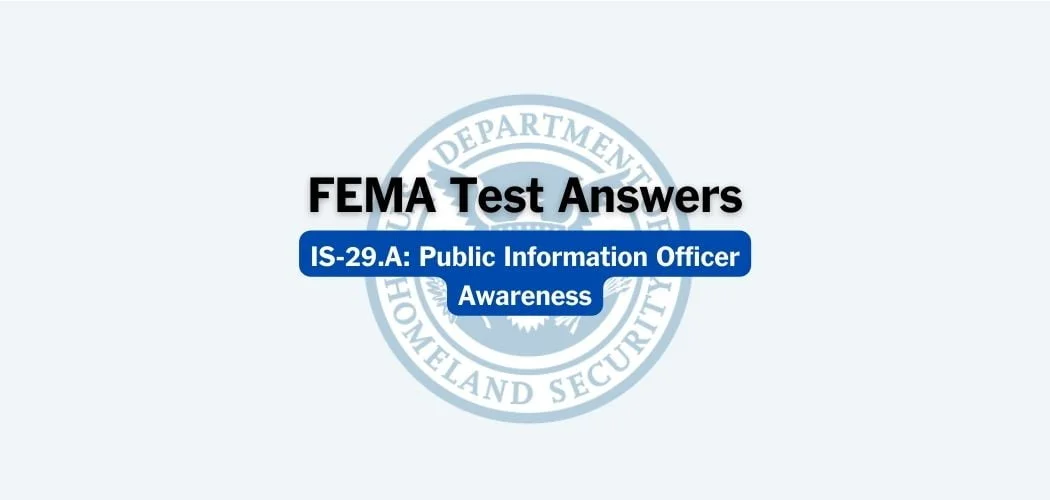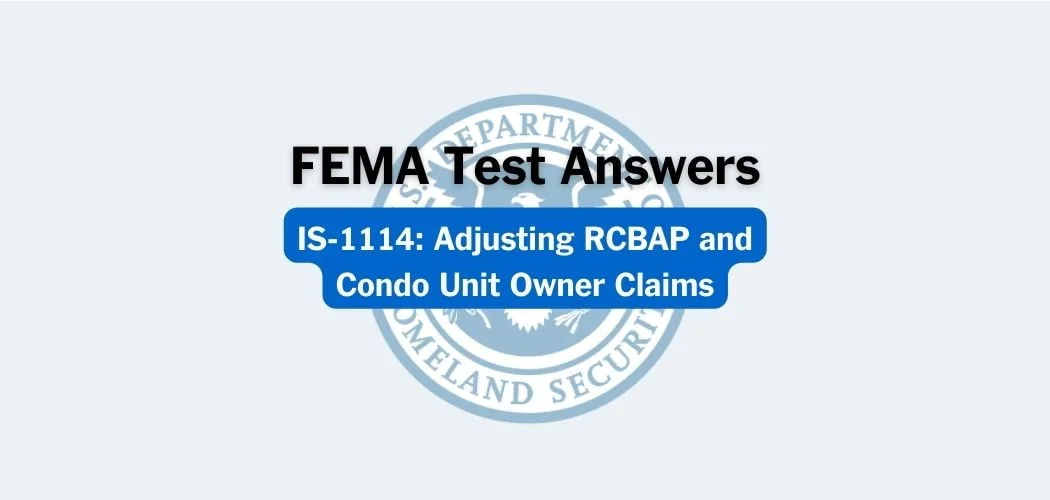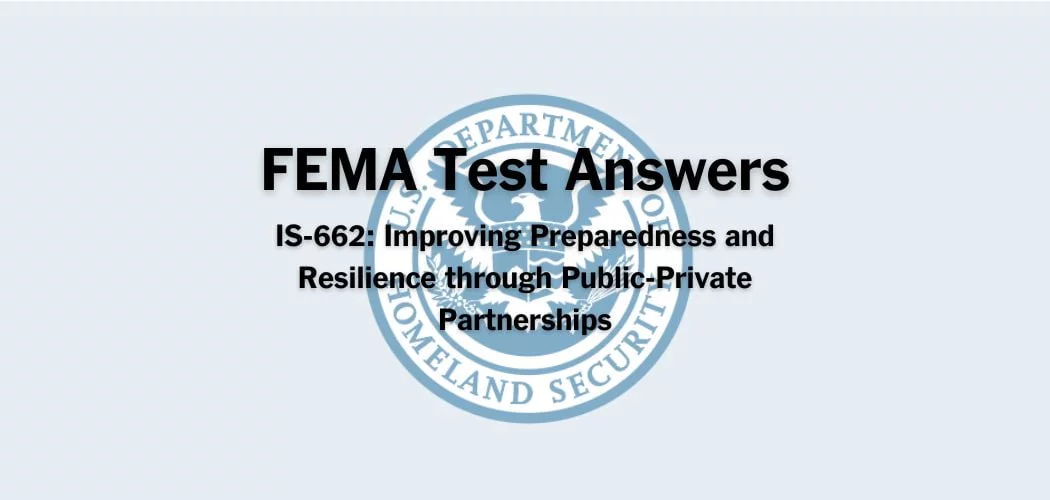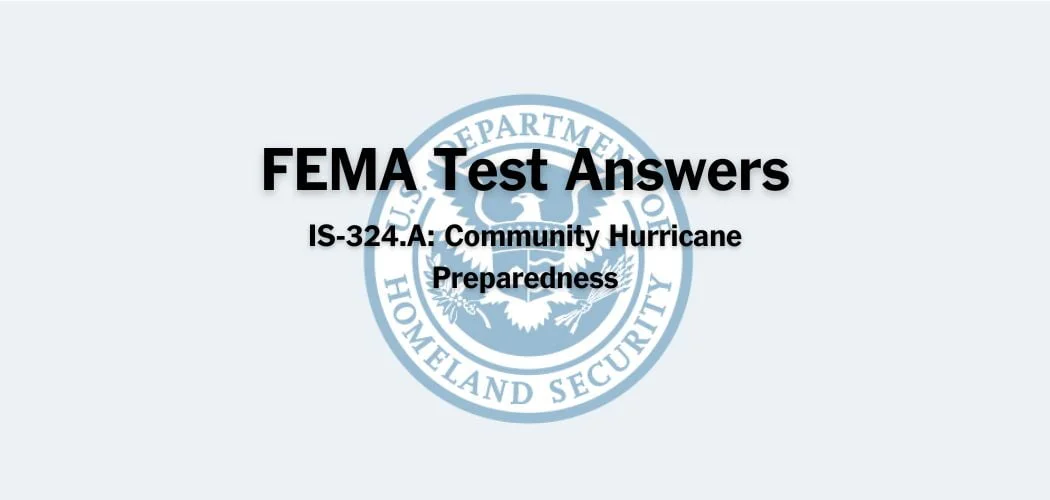Overview: The FEMA IS-1024 course was published on 2/28/2019 to provide an overview of water and wastewater treatment systems considerations.
By the end of the IS-1024 course, State, Local, Tribal, and Territorial Applicants and Recipients will be able to understand all aspects of water and wastewater treatment system considerations.
FEMA IS-1024 test answers
Each time this test is loaded, you will receive a unique set of questions and answers. The test questions are scrambled to protect the integrity of the exam.
Question 1. During this process, chlorine may be added in order to kill any remaining parasites, bacteria, and viruses, and to protect the water from germs when it is piped to homes and businesses.
A. disinfection✅
B. filtration
C. coagulation and flocculation
D. sedimentation
Question 2. To document the pre-disaster condition of a water or wastewater system, the Applicant should provide the following information:
A. a signed letter from the building owner or landlord
B. maintenance records✅
C. a signed letter from the maintenance company
D. occupant birth certificates
Question 3. Select the correct question the Applicant should document regarding facilities.
A. Was the facility damaged as an indirect result of the disaster?
B. After the disaster, was the facility under construction or scheduled for repair/replacement?
C. Was the facility in a flood zone?
D. Was the facility damaged as a direct result of the disaster?✅
Question 4. Identify an eligible Applicant.
A. Private Nonprofit Organizations
B. Public Organizations✅
C. Volunteer Organizations
D. Private Businesses
Question 5. The Applicant is responsible for obtaining all required ___________ permits from the appropriate agencies before proceeding with Emergency Work.
A. environmental and historic preservation✅
B. utility safety code
C. environmental and utility preservation
D. electric safety code
Question 6. An eligible public facility is one that a State, Territorial, Indian Tribal, or local government owns or has legal responsibility for maintaining, including all of the following, except:
A. sewage treatment and collection, water supply and distribution
B. non-federal-aid street, road, or highway
C. land used for agricultural purposes✅
D. buildings used for educational, recreational, or cultural purposes
Question 7. Identify an ineligible cost incurred during an incident.
A. authorized and not prohibited under Federal regulations
B. indirectly tied to the performance of eligible work✅
C. consistent with the Applicant’s internal policies
D. necessary and reasonable to accomplish the work properly and efficiently
Question 8. Cost is deemed ineligible when:
A. it is increased by insurance proceeds✅
B. it is directly tied to the performance of eligible work
C. it is necessary and reasonable to accomplish the work properly and efficiently
D. it is authorized and not prohibited under Federal regulations
Question 9. Considerations are dependent on what was damaged during the event and what requires focus. Special considerations include the following, except:
A. mitigation
B. environmental preservation
C. insurance✅
D. facility plans
Question 10. For work to be completed {work less than 100% complete}, Applicants will be asked to provide maintenance records, and a ______ will be performed.
A. site inspection✅
B. property assessment
C. insurance evaluation
D. document disclosure
Question 11. This refers to pumping sewage under pressure from one location to another.
A. sewage transmission✅
B. sewage collection
C. sewage disinfection
D. sewage treatment
Question 12. Identify one of the four basic components of eligibility.
A. Recipient
B. cost✅
C. hours
D. volunteers



